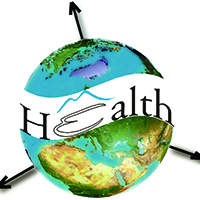Visualization of schistosomiasis snail habitats using light unmanned aerial vehicles

All claims expressed in this article are solely those of the authors and do not necessarily represent those of their affiliated organizations, or those of the publisher, the editors and the reviewers. Any product that may be evaluated in this article or claim that may be made by its manufacturer is not guaranteed or endorsed by the publisher.
Authors
Schistosomiasis, or snail fever, is a parasitic disease affecting over 200 million people worldwide. People become infected when exposed to water containing particular species of freshwater snails. Habitats for such snails can be mapped using lightweight, inexpensive and field-deployable consumer-grade Unmanned Aerial Vehicles (UAVs), also known as drones. Drones can obtain imagery in remote areas with poor satellite imagery. An unexpected outcome of using drones is public engagement. Whereas sampling snails exposes field technicians to infection risk and might disturb locals who are also using the water site, drones are novel and fun to watch, attracting crowds that can be educated about the infection risk.
Supporting Agencies
Bill and Melinda Gates Foundation, National Institutes of Health, National Science Foundation, Stanford University Woods Institute for the Environment, Freeman Spogli Institute at Stanford University, Davis Family E-IPER Fellowship, James and Nance Kelso Fellowship, Michigan Society of Fellows at the University of Michigan, University of Washington Innovation Award from the UW Innovation Imperative, Sloan Research Fellowship from the Alfred P. Sloan FoundationHow to Cite

This work is licensed under a Creative Commons Attribution-NonCommercial 4.0 International License.
PAGEPress has chosen to apply the Creative Commons Attribution NonCommercial 4.0 International License (CC BY-NC 4.0) to all manuscripts to be published.













